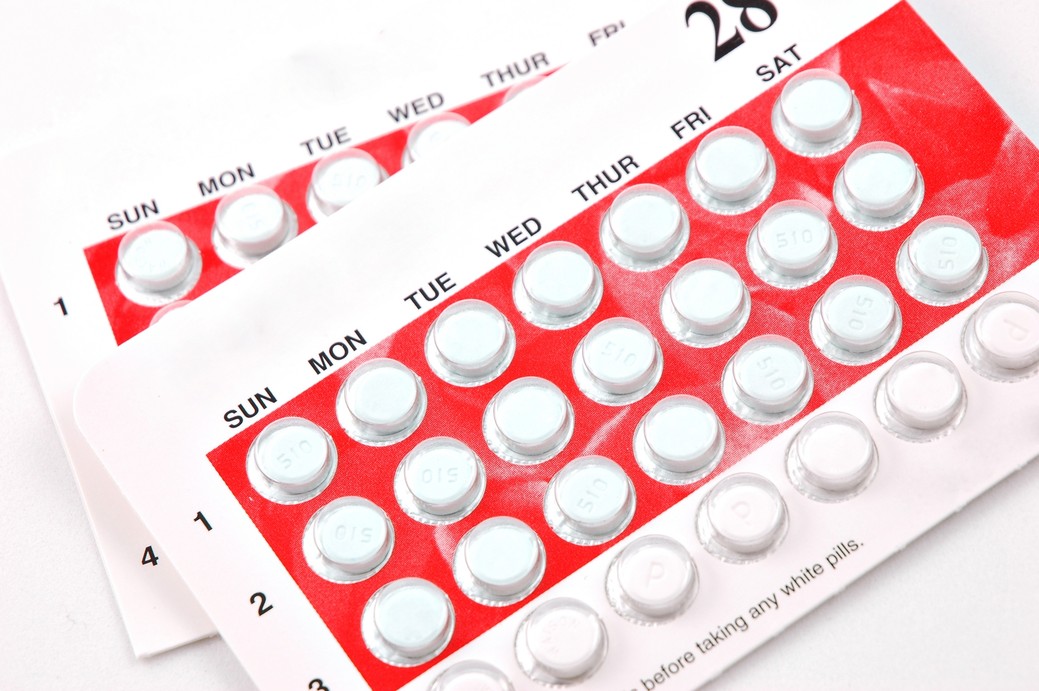
Affordable Pharmacare: The Case for Generic Drugs
Increased generic drug use can save Canada’s health care system money.
If you are going to be sick in Ontario, it pays to get the “right” disease. Take John Colmar of Belleville, for example. In July 2010, Colmar was diagnosed with a rare form of blood cancer and prescribed Sorafenib. Typically, Health Canada steps in to cover part or all of the costs of medication – but Colmar was out of luck. Health Canada approved Sorafenib for some types of cancers, but not for Colmar’s: acute myeloid leukemia. This bureaucratic sticking point meant that Colmar had to pay the entire $8,000 monthly bill for medication out of his own pocket. Colmar had not, according to Health Canada regulations, contracted the “right type” of cancer.
Not getting the “right” disease (and prescription to match) which met Ontario’s drug assistance plan criteria literally shortened Colmar’s life. Or as Colmar, a businessman, father and grandfather said at the time: “I can live 10 years with it (Sorafenib) or 10 days without it.” Once Colmar’s health insurance and savings ran out, he had to live without it. He died months later. Worse, Colmar’s situation was not and continues not to be an isolated one. In its national report card in 2010, the Cancer Advocacy Coalition of Canada reported cancer patients were remortgaging their homes to pay for cancer drugs. The Canadian Cancer Society estimates cancer drugs cost an average of $65,000 a year per patient. One in 12 Canadian cancer patients (like Mr. Colmar) in 2010 were not able to access the cancer drugs necessary to prolong life.
Why are some Canadians like Mr. Colmar denied access to medical services or treatments? The reason, like with so many aspects of life, is money, or more precisely the lack of it. The pharmaceutical or service is expensive and with burgeoning healthcare costs in Canada something has to go. Services and drugs are delisted or removed from health care coverage by the province. Sometimes delisting occurs due to safety concerns, but more often than not, as in Colmar’s case, the reason is financial. And with health care spending rising faster than inflation and population growth, delisting can be expected to continue for some time to come. Spending on health care reached 11.6 per cent of Canada’s gross domestic product (GDP) in 2011, slightly down from an historic high point of 11.9 per cent in 2009 and 2010. According to the Canadian Institute for Health Information (CIHI), total health care spending in Canada reached $200.5 billion in 2011, growing by $7 billion in the same year.

Clearly, cost containment is necessary. In the case of pharmaceutical drugs at least, the use of lower-cost generic drugs – that is, pharmaceutical copies of brand-name drugs manufactured after their patent protection has expired – is one solution. Lowering the cost of the drug part of the health care equation might result in less delisting and tragedies like Colmar’s.
Why are generic drugs the answer? They cost substantially less than their brand-name counterparts and save governments and patients millions of dollars. A 2008 report by the Canadian Competition Bureau called Benefitting from Generic Drug Competition in Canada: The Way Forward, suggested changes to the way governments and private insurance plans pay for generic drugs could save Canadian taxpayers up to $800 million a year. Generic drugs have, according to the Canadian Generic Pharmaceutical Association (CGPA), saved Canada’s health-care system nearly $26 billion since 2007. A Columbia University study found that every dollar invested in new medicine yields seven dollars in savings to the health care system by reducing hospital, physician and home care costs.
Better yet, the use of generic drugs is increasing. Last year, generic drugs filled 69 per cent of all prescriptions paid for by the Ontario government. Between 2006 and 2007, generic drug expenditures increased by more than 20 per cent to $4.1 billion. (That amount is expected to increase further as several highly prescribed drugs are scheduled to come off patent in the coming years.) As the use of generic drugs has expanded, so too has the range of prescription drugs available through Ontario’s drug plan. Ontario added 186 new brand-name and generic drugs and 49 cancer drugs to its Ontario Drug Benefit Program’s formulary from January 2006 to June 2011.
Jim Keon, President of the Canadian Generic Pharmaceutical Association (CGPA), says a wide availability of generic prescription medicines is essential to sustainable health care. The CGPA represents manufacturers, distributors and suppliers to Canada’s generic pharmaceutical industry. “Generic drugs are providing excellent value for Canadians, and those savings are increasing,” Keon says. “In fact, generic drugs are the only component of Canadian health care where costs are actually decreasing.” Growing the generic drug market would, according to Keon, result in even more benefits to Canadians.
In 2010, the Ontario government announced plans to increase access to generic drugs by reducing their cost. The centerpiece of the plan was to lower the cost of generic drugs purchased out of pocket or through private employer drug plans by more than 50 per cent. By 2014, the government stated that generic drugs in Ontario would be sold for no more than 25 per cent of the cost of the original brand-name drug.
For complicated reasons, Canadian prices for generic drugs are among the highest in the world. A study released by the Fraser Institute (entitled Canada’s Drug Price Paradox 2010) compared 64 generic drugs available in Canada and the United States. Canadian prices, it found, were on average 90 per cent higher than their American counterparts. Interestingly, there were also price discrepancies between specific drug categories. For instance, for generic drugs that were more expensive in Canada, prices were an average of 153 per cent higher than in the United States. Conversely, for generic drugs that were less expensive in Canada, prices were an average of 38 per cent lower than in the United States. Retail prices for generic copies in Canada were 73 per cent of the price of their brand-name medicine, compared with just 17 per cent of the brand-name medicine in the United States.

The Ontario government points the finger at pharmaceutical rebates. Generic manufacturers, the government maintains, were paying pharmacies to encourage them to stock their drugs. The manufacturers would provide pharmacies with a rebate of an average 40 per cent of the invoice price. That is, pharmacies obtained drugs at a low wholesale price. They then invoiced the government for the same drugs at the significantly higher provincial drug formulary price. Pharmacies, the government maintains, then kept the savings to the tune of $240,000 a year on average, based on 30,000 generic drug prescriptions a year.
To counteract this effect, the government announced in April 2012 that it would lower the provincial drug formulary price it pays for the top 10 generic drugs to 20 per cent of their brand-name equivalents. This is lower than the current rate of 25 per cent of the brand-name equivalent price. (Other provinces have also followed suit in a bid to drive down the price of generic drugs. Quebec’s health-care policy, for instance, requires the province to match the lower generic drug price available in Canada.)
However, according to Keon, the Ontario government’s actions come with a price tag. Suddenly yanking down the cost of generic drugs, Keon maintains, comes with serious repercussions. Lower returns on generic drugs may act as a disincentive to pharmaceutical manufacturers. This could, in turn, jeopardize the supply of generic medicines in Ontario and Canada.
“The Ontario government must recognize that further price cuts will result in fewer cost-saving generic drugs coming to market, and at a later date,” says Keon, adding the changes were implemented without consultation with the generic drug industry. “That will leave the Ontario government and other payers paying for the brand-name drug.”
Economic repercussions might also be felt inside the industry. Ontario-based generic drug companies employ 8,000 people in research, development and manufacturing and export more than $1 billion worth of products each year. Further, Keon adds there are plausible alternatives to the Ontario government’s current policy regarding generic drugs. The Drummond Report on the state of Ontario’s public services – which coincided with the release of the 2012 Ontario Budget in March – is one. The report made several recommendations regarding pharmaceuticals. These included using an evidence based approach to decisions regarding coverage of new brand-name drugs, permitting pharmacists to substitute less expensive alternatives to prescriptions and to administer injectable and inhalant medicines. Another recommendation would allow pharmacists to prescribe for minor ailments.
Keon also proposes Canada increase generic drug use to the levels found in the United States. This alone would save Canada $1.6 billion in prescription drug costs in the first year alone. Generic drugs fill 54 per cent of prescriptions in Canada. In the United States, they fill 75 per cent of all prescriptions. “It is clear that governments, employers and patients could save significantly more if generic utilization rates in Canada reached levels achieved in the United States,” said Keon. To this end, Keon recommends providing incentives to generic drug producers. Ensuring that new generic drugs are quickly added to the government’s drug plan formulary is one such incentive. Others include providing incentives for generic drug firms to challenge invalid or non-infringed drug patents. These steps would “reduce health-care spending with no adverse impact on patients,” says Keon.
However, no matter what approach is taken, it is clear that generic drugs provide part of the solution to
Canada’s health-care expenditure woes. Unless a solution is found and found fast, premature and unnecessary deaths like that of Colmar will continue. Preventing them is worth any cost.











